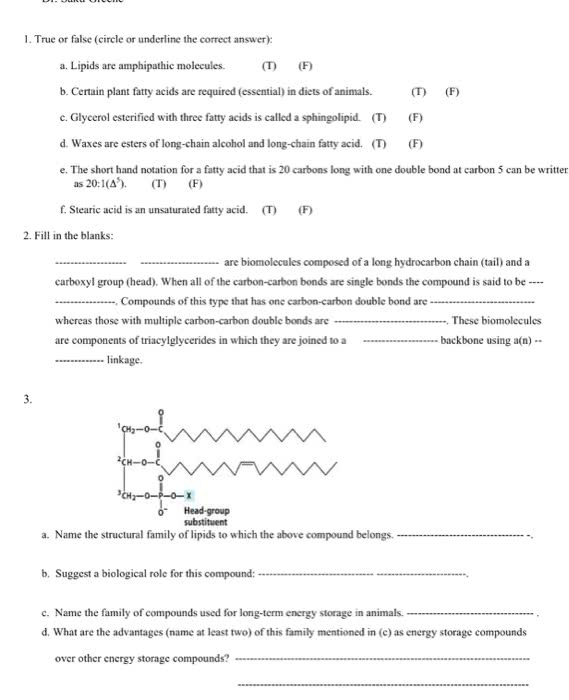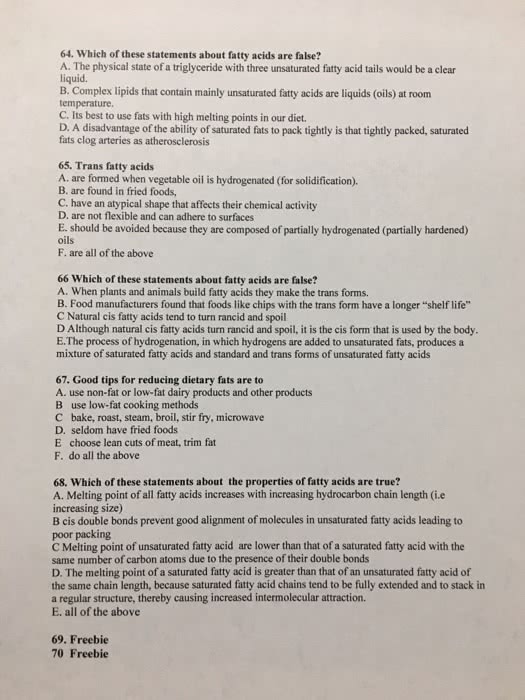Biochemistry 2280A Study Guide - Midterm Guide: Stereochemistry, Acetaldehyde, Pyruvate Dehydrogenase Complex
Document Summary
Describe and distinguish between different classes of lipids, explain their biological roles. Fatty acid molecule has two distinct regions: a hydrocarbon chain (hydrophobic, not chemically reactive), and a carboxyl group behaving as an acid. In aqueous solution, carboxyl group is ionized, hydrophilic, and chemically reactive: more often, the carboxyl group is linked to other groups to form esters or amides. Fatty acids are covalently linked to other molecules by their carboxylic acid group. Amphipathic: molecules with both hydrophobic and hydrophilic regions. Some fatty acids have saturated/unsaturated hydrocarbon tails: palmitic acid has a saturated tail: no double bonds, contains max. possible number of hydrogens, oleic acid has unsaturated tail, with one/more double bonds. Double bonds create kinks in hydrocarbon tails, interfering with their ability to pack together: first c=c double bond added to fatty acids is usually between c9 and c10, from the cooh end. Almost always cis, forming a kink in the chain.


